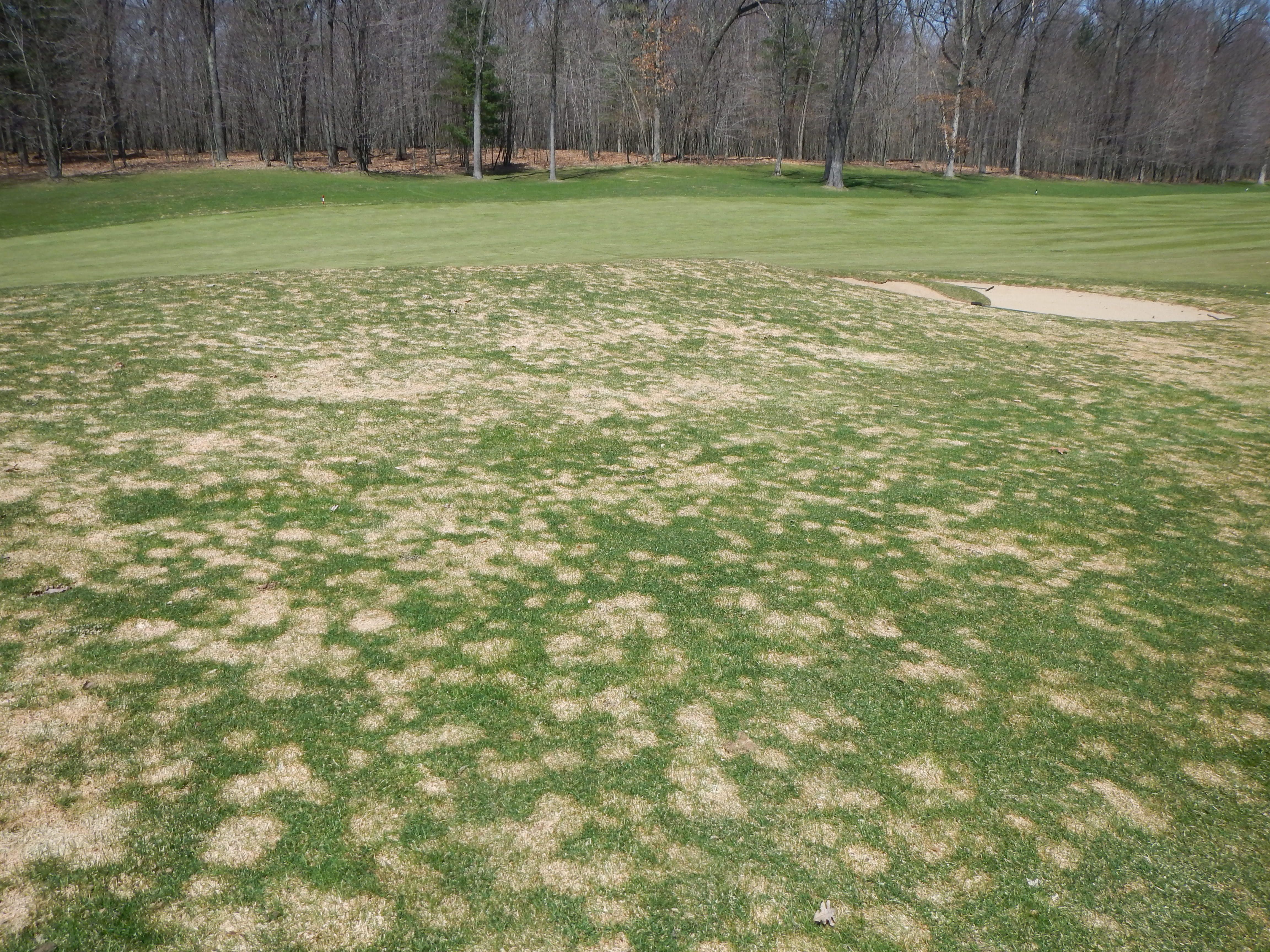By Dr. Kevin W. Frank
Michigan State University
Winter conditions often cause worry for golf course superintendents as snow, ice, and cold temperatures have the potential to wreak havoc on turfgrass. This last winter was particularly snowy during the months of January and February and an icing event in early January in parts of the state caused concern.
Heavy snowfall is generally considered a positive for turf conditions as it provides a nice layer of insulation to protect the turf from extreme cold temperatures. The one negative with heavy snowfall is that sometimes we’ll see an increase in snow mold activity and that appears to be the case on some golf courses this year. Damage is especially evident in roughs that were not treated with protective fungicides. The good news is that as spring temperatures warm and turf growth resumes it quickly recovers and grows out of the damage.
The ice layer that formed in parts of the state in early January does not appear to have caused any significant damage. Ice layers during winter can kill the turf by essentially suffocating it as the ice can form an impermeable layer that prevents gas exchange between the turf, soil, and atmosphere. For the most part the ice that formed this last winter was very thin unlike the 2-3 inch ice sheets that developed in the winter of 2014 that caused widespread death of putting greens especially in the greater Detroit area.
As part of our turfgrass research efforts at MSU, working in cooperation with researchers at the University of Minnesota and with funding provided by the Michigan Turfgrass Foundation, we installed a winterkill sensor package on six golf courses in Michigan this last winter. The sensors monitored soil temperature, gases, and moisture throughout the winter.
Our goal is to identify specific temperature, gas, or moisture levels that result in winterkill in real time so that golf course superintendents could attempt actions to mitigate injury if possible. This was the first year of our research, so we are still in the learning and development phase.










